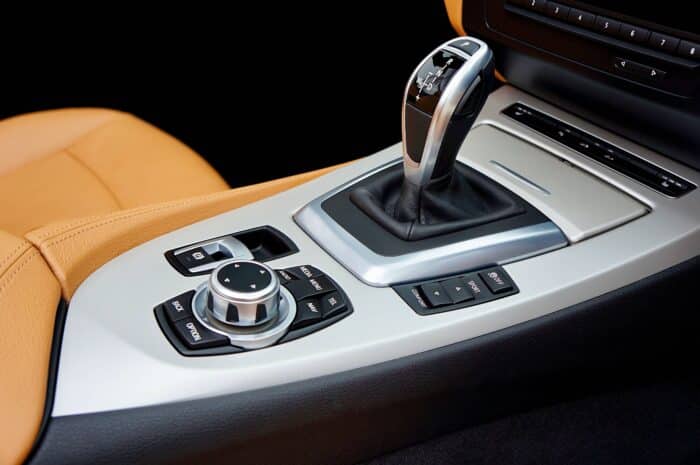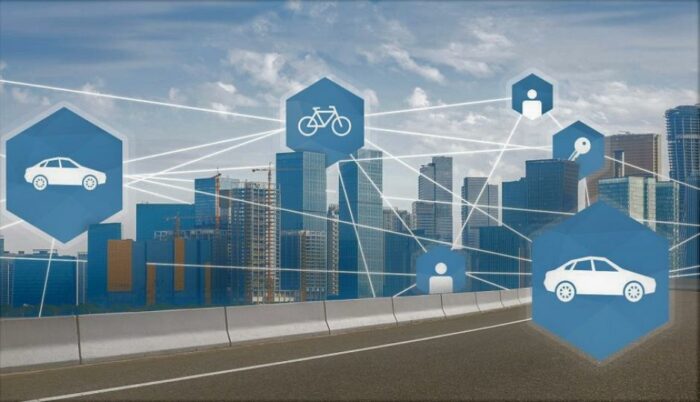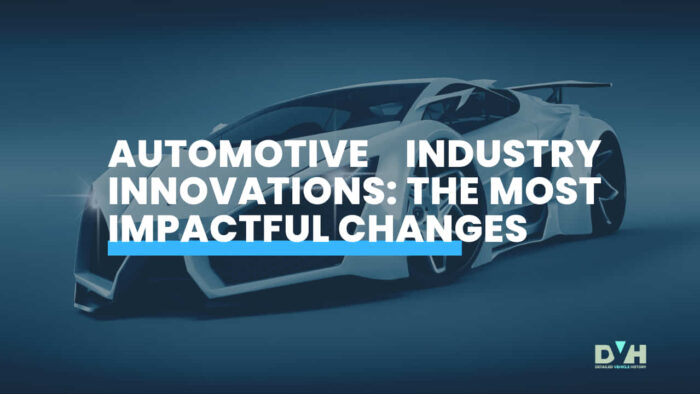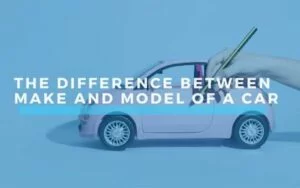With the rate at which the automotive industry is growing, we could have flying cars by next year, perhaps! The automotive industry has not just grown but has seen some of the most innovative changes in recent years. According to GlobeNewsWire, the industry is expected to grow 205 Million Units by 2028. From autonomous vehicles to electric cars and advanced safety features, the industry has evolved to meet the current needs of consumers. Digital innovation and technological advancements have played a major role in these changes, enabling automakers to create new and innovative products and services. In this article, we will explore the most impactful changes and innovations in the automotive industry and take a good look at how they have transformed the industry as a whole.
Autonomous vehicles (AVs)
Autonomous vehicles represent one of the most exciting and transformative innovations in the automotive industry. These vehicles are capable of driving themselves, using a combination of sensors, cameras, and advanced algorithms to navigate roads, avoid obstacles, and make split-second decisions. With the potential to reduce accidents, improve traffic flow, and revolutionize transportation as we know it, autonomous vehicles are the focus of intense research and development efforts by some of the world’s biggest automotive companies. While there are still many challenges to overcome before fully autonomous vehicles become a reality, the promise of a safer, more efficient, and more convenient future is driving the industry forward. Whether you’re a driver, a passenger, or simply a curious observer, the rise of autonomous vehicles is a fascinating and exciting development to watch. Some companies that are strictly pushing toward the dream of having fully autonomous vehicles on the roads are:- Intvo
- Udelv
- Waymo
- Tesla
- Cruise, etc.

Vehicle Connectivity
Vehicle connectivity has been another game-changer in the automotive industry. Today’s cars are equipped with a variety of sensors and connectivity options that allow them to communicate with other vehicles, infrastructure, and even the Internet. This connectivity enables a range of features, such as real-time traffic updates, remote diagnostics, and predictive maintenance. But how can we identify each vehicle? Through the VIN? No. Vehicles equipped with this technology usually come with a tamper-proof digital identity that differentiates them from other vehicles with connectivity enabled. This way, these vehicles can be easily monitored and tracked. Vehicle connectivity has also enabled the development of new services such as ride-sharing and car-sharing, which we will discuss further in this article. Interested in vehicle connectivity? Take a deep dive into the major projects carried out by V2X Network and NoTraffic and experience the beauty of vehicle connectivity coming alive through autonomous transactions and AI-powered traffic signal transfer.
ALSO READ: Is It Better to Buy a Used Car Compared to a New Car?
Electric Vehicles
Electric vehicles (EVs) are not new to the average person now because they have been gaining traction in recent years and for a good reason. EVs are environmentally friendly, quiet, and efficient. They are also cheaper to operate and maintain than traditional gas-powered vehicles. They are also a great way to cut down on carbon emissions and reduce the carbon footprint. With the growth in popularity, the automotive industry has responded by investing in the development of EVs and charging infrastructure. Many automakers have already released or are planning to release electric cars in the near future. The likes of Tesla, Chevrolet, Porsche, and startups such as Lordstown Motors Corps and ChargeX are making big moves daily in this sector. Just recently, Lordstown Motors Corps introduced an electric pickup truck named EnduranceTM. This only goes to show that we may have more electric vehicles in the coming years.
Buying a used electric vehicle?
Not all used vehicles in the used car market are reliable or roadworthy. This is why it is recommended to always run a VIN check to verify a vehicle’s condition before buying. A VIN check with Detailed Vehicle History provides detailed insights into a vehicle’s history and records and can point out hidden damages and defects. Some of the information gotten after a VIN check with Detailed Vehicle History includes:
- Accident history
- Damage history
- Lien and loan records
- Service history
- Maintenance schedules
- Auction records with pictures
- Sales history
- Open recalls
- Theft records
- Title brand records, and more
To get started right away, navigate to the VIN check tool or the license plate lookup tool provided in Detailed Vehicle History to get your vehicle’s information downloaded instantly.

Shared Mobility
Shared mobility represents one of the most transformative and innovative changes in the automotive industry in recent years. This concept involves the sharing of vehicles, either through car-sharing services, bike-sharing programs, or ride-hailing platforms like Uber and Lyft. By sharing vehicles, consumers are able to enjoy the benefits of mobility without the high costs associated with owning a car.
Shared mobility can be more sustainable, reducing the number of cars on the road and lowering carbon emissions. This trend is being driven by changing consumer attitudes towards car ownership as well as advancements in technology that make it easier to connect riders with drivers or access shared vehicles. As shared mobility continues to grow in popularity, it has the potential to revolutionize the way we think about transportation, making it more accessible, affordable, and sustainable for everyone. Some new startups in this field include Launch Mobility and Beam, alongside others like Uber, Lyft, etc.
Artificial Intelligence
Artificial intelligence (AI) has had a profound impact on the automotive industry over the years. AI is used in a variety of applications, such as autonomous driving, predictive maintenance, and driver assistance systems. AI algorithms can process vast amounts of data from sensors and cameras to make decisions in real time with accurate precision. This technology is designed with the aim of increasing road safety and efficiency and making cars intelligent. Imagine having some form of assistance in your vehicle while on the road. With AI, cars can now recognize and respond to voice commands, interpret and act on visual data from cameras and sensors, and even drive themselves whenever necessary.
AI is also being used to optimize vehicle performance, reduce fuel consumption, and improve safety features. As technology continues to advance, AI has the potential to transform the automotive industry in ways we can’t yet imagine, leading to a more connected, efficient, and intelligent transportation system. RevitsOne AI fleet management system is coming up to speed, as is Apex AI, which provides complex AI API solutions.
Big Data and Analytics
Big data and analytics have become critical tools for automakers in recent years. The vast amounts of data generated by cars and other connected devices provide valuable insights into consumer behavior, driving patterns, and vehicle performance. Automakers can use this data to develop new products and services that better meet the needs of their customers. Procon Analytics, Intel, UptimeAI, leadDNA, and others are working hard daily to bring data solutions to the automotive industry.

Internet of Things
The Internet of Things (IoT) is a network of connected devices, sensors, and machines that can communicate with each other and exchange data. With IoT, smart cars can communicate with other vehicles, infrastructure, and even the driver’s home. This technology can also enable new services such as predictive maintenance, remote diagnostics, and over-the-air updates.
By creating a more connected and intelligent vehicle, the IoT is helping to revolutionize the way we think about transportation, making it safer, more sustainable, and more convenient for everyone. Whether you’re a driver, a fleet manager, or a transportation planner, the rise of IoT in the automotive industry is an exciting development to watch, with the potential to transform the way we move and live in the future. Some of the leading companies in this field include CONTUS, IBM, Intellias, and more.
Advanced Safety Features
Advanced safety features such as collision warning systems, automatic emergency braking, and lane departure warnings have become standard in many vehicles. These features use sensors and cameras to detect potential dangers and alert drivers or take corrective actions automatically. Advanced safety features have already saved countless lives and will continue to be a critical area of innovation in the automotive industry.
Due to digital technologies like artificial intelligence, big data, and the Internet of Things, the automotive sector has experienced some of the most significant innovations in recent years. The sector has seen innovation in a wide range of fields, as mentioned in this article, including autonomous vehicles, vehicle connection, electric vehicles, shared mobility, and increased safety measures. While scouting around for high-tech vehicles, remember that a used car’s history has to be checked before purchasing. This is why we recommend using our VIN check tool to check your car’s history before committing to any purchase.










